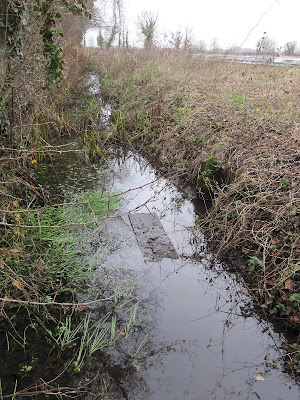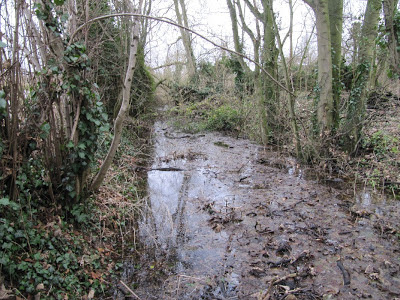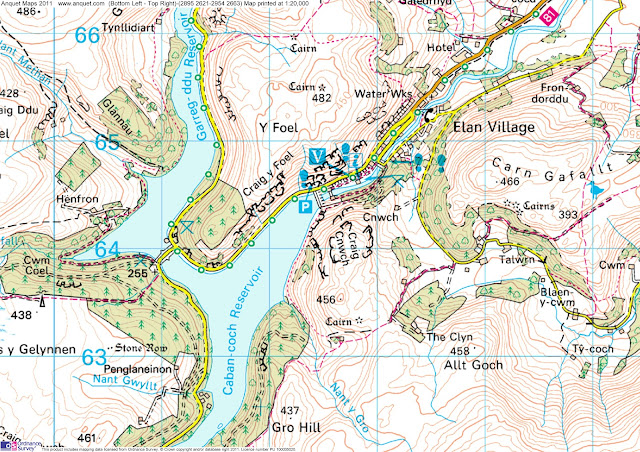I felt I needed out of the house for a walk on Boxing day, too much Christmas dinner had taken it's toll. I thought I'd have a walk round the footpaths that skirt the village Cholsey I live in and have a look at some of the flooded fields I could see when driving down the Westfield road. First port of call was the Bullshole a place I had spent many childhood hours playing in the brook.
Not quite the Bulls hole but Cholsey Brook which the Bulls hole joins over on the left.
Cholsey brook again where it flows under the bunk line, the bunk line is an old railway which ran from Cholsey Station to Wallingford. Beaching closed it in 1961. This part of the brook was culverted sometime in the 1960's. The brook normally flows about 30cm lower than it is at the moment.
The Bulls Hole which most likely got its name from the cattle that used to drink here. As children we used to play and paddle in the water during the summer taking picnics to eat. It's fed from the brook further near the Lees in Cholsey and runs the edge of a field before running through a culvert under the main London to Bristol Railway (GWR) which can be made out in the photo. Cattle no longer graze in the field so the Bulls home has become very over grown now.
If you carry on along the footpath by the brook you will come to a long tunnel under the railway which will bring you out at position where you can take the footpath to either the Lees or across the fields to Lollongdon.
The railway embankment the tunnel went through is over on the left in the distance, you cross a paddock then over the brook again before reaching this is the muddy footpath which looks like it was flooded a couple of days previous.
Further along the footpath you cross a track then follow a hedge past the pylon you see in the distance. This is looking back the way I came and the house over on the left is Little Lollingdon
After going through a hedge you will need to go along this footpath which as you can see is quite flooded
and over to the left you can see the field is flooded as well with seagulls feeding in the shallow water. The floods can be seen from the Westfield road as you drive down.
Crossing a drainage ditch you can hear water running and looking see the water draining from the fields into the ditch.
The ditch which will flow eventually back into Cholsey Brook, the plank I think may be part of the old bridge that was here.
Walking on past Lollingdon and up the hill you can get a good view of the Manor which is one of the few Moated Manors country and is mentioned in the Doomsday Book.
Near the track you can see some of the trees which have had carvings done over the years, I wonder who MG 1959 is?
From here you can get a good view of the flooded fields which are just outside Cholsey.
I headed back down the hill to take the bridleway back to Cholsey but it is worth stopping for a look at Lollingdon Manor.
Along the bridleway you will pass Lollingdon spring which is where Cholsey Brook rises and is fed by the water that filters through the chalk from the downs
If you look you can see the water bubbling up through the bottom.
From the springs you walk along the bridleway to Cholsey past Westfield farm
and go along this part of the bridleway where you come out
at these farm buildings which have now been made into these two sets of units.
The barns once looked like this and were in the stage of nearly collapsing with a couple which did just that.
Carry on the bridleway past the Elms and Pancroft Farm which was over on the right there, now it looks more like a scrapyard with old cars and trucks laying round the place. Behind me out of site is a bridge which takes the Main railway across the bridleway where you walk under to come back out at Westend in Cholsey. That was one of the short walks you can take in Cholsey, I will write another on a later date.


































































